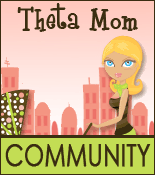Any good checklist for seeking a quality daycare center will mention inquiring about daycare ratios. How many children to how many adults in the room? Each state has its own minimum requirement.
In Massachusetts (one of the better regulated states) where I was a lead teacher in an infant room, the ratio was three infants to one adult or a maximum of seven infants to two adults. Of course most daycare centers will opt for the maximum because they are, after all, a business.
Did you ever watch Jon and Kate cope with their eight infants? Between feeding, diapering, and holding, they needed a team of volunteers to keep their household running. Maybe seven infants to two adults is easier? Think again.
The truth is that there is often just one adult per six children for a majority of the time.
Why? In daycare centers, infants/toddlers are required to have a diaper change every two hours. Diapering in a daycare center is much more complicated than at home:
- Diapering area is often separated from main play/floor area by a gate or door
- Caregiver notes time of diaper change and puts on rubber gloves
- Each child has their own personal supply of diapering items to be retrieved from cabinets or drawers
- Daycare children usually have on footwear, which needs to be removed and reassembled if the child is wearing jeans or fitted clothing, especially if there is a BM involved
- After child has been diapered and brought back to the others, the caregiver must return to area to dispose of diaper/gloves and changing sheet paper, wash area with disinfectant, and lay down a new paper before retrieving the next child to be diapered.
This process takes at least 8 minutes per child in even the most efficient operations, unless clothing is wet or soiled and the child must be changed into a new outfit.
Let's do the math: 8 minutes x 7 children = 56 minutes that one caregiver is alone with the other 6 children.
One hour later, the whole process begins again with the first child that was diapered! In between diaper changes, there are bottles, highchair feedings, naps, and playtime. This is an amazing feat considering state regulations require caregivers to individually hold babies when they drink from bottles and many infants need to be rocked or held before napping. Trust me when I tell you that two sets of hands are not enough for seven infants in a childcare room following these state regulations and ratios.
You might have thought it was okay that your child was receiving 1/3 of an adult's daily attention, but what if they are actually getting by with only 1/6 of an adult's daily attention a majority of the time?
How to Find out the True Teacher to Child Ratio of a Prospective Daycare?
--Rather than being content with knowing the center's ratio, you might want to ask about the diapering process:
How often are children diapered?
Who does the diapering?
(If it is one person or the team rotates, how many adults are left with the other six children?)
--Make More than One Visit to Observe the Infant Room Before Deciding:
Most centers arrange times to talk to teachers during children's nap times, so the teacher will have time to devote to your questions. However, this is often misleading, because this is the most calm part of the day. With lullabies playing softly on the stereo, it might appear to be the perfect environment.
If you like the center after talking with the staff, ask if you can stop in another time or two to observe only. Ask to come between 11:00 AM and 12:00 PM when lunch time is in full force or 3:00 PM to 4:00 PM when children are up and about, just to get an idea of what it is truly like at different times. Only arrange these observations with the understanding that teachers will NOT have time to talk to you during these peak care hours.
Nanny's Note: I have worked and interned in a variety of daycare centers. I believe this ratio issue is one contributing factor to daycare staff burn out and turnover. I found many center environments unsafe and chaotic due to ratio issues.
I'd be very interested to hear from other caregivers with similar or very different experiences. Parents - what do you think?




























I don't know how many daycares adhere to the guidelines perfectly, but am pretty sure our ex-daycare didn't even come close. While I sympathize with the enormous task of changing all those diapers, it was extremely upsetting to me to get my daughter home and discover a raging diaper rash. In fact, it was probably the straw that broke the camel's back when I made my decision to leave my job and become a freelance writer so I could stay home with my toddlers. Rational or not, I just kept thinking, "If they can't keep on top of diaper changes--one of the very basics--what else aren't they doing adequately for my kids?"
ReplyDeleteExcellent post.
ReplyDeleteI live in MA and I do recall that my daycare center had six to seven infants at one time and two full time teachers. There were mornings where I would walk in and one would be changing diapers and the other would be feeding. It would appear very hectic with some of the babies crying who simply had to wait their turn. What I did apppreciate about this center, however, was that despite falling within the ratio of seven infants to two teachers, they had an additional caregiver who worked part time half a day to assist. She covered lunch shifts, so for half of that time there were still two teachers, but she gave them a much needed break. And for several hours a day there were three teachers to seven babies. That in my opinion was fantastic.
Deb -- your instincts were probably correct. The 2-hour regulation was on top of those instances when a baby had a BM, which would require immediate changing, so some babies weren't in their diapers for more than a half hour. Parents used to comment on the amount of diapers we went through because they are expensive.
ReplyDeleteSo, you are right -- if they weren't getting that basic need accomplished, that isn't a good sign.
Maria --
ReplyDeleteAn extra person would be so helpful in most daycare centers, because then there would always be two adults present with a majority of the children, especially for safety issues. If one person is alone with six infants and is feeding one, she can't respond to others who may need her. The weird dynamic in an infant room is that tiny babies may be in bouncy seats or swings while new crawlers can try to crawl under or climb over them. The new walkers can get into all kinds of mischief concerning the other babies who are like sitting targets.
The sad fact is that this occurs in the best of centers who are conscientious and caring. All centers are businesses and will usually follow state regulation minimums (in space and staffing) as to keep the costs as low as possible. I believe that state minimum regulation requirements need to changed.
A note on disinfecting after diaper changes from a seasoned child care provider. Daycare centers in my state enforce stringent rules stating to allow disinfecting solution to contact diaper changing pad for at least 2 minutes between consecutive changes before wiping dry. Then after the last change, allow the solution to contact the surface for 10 minutes and air-dry. Ever tried this in a toddler room with maximum ratios? There is no such thing as the "last change."
ReplyDeleteAnonynanny -
ReplyDeleteExcellent point! I glossed over these important details, but they are common in daycare regulations.
Also encouraged is some type of enrichment -- songs, talking, and other nurturing interaction during diaper changes, which also adds time. Good daycare centers don't treat diapering like an assembly line or car wash.
This comment has been removed by a blog administrator.
ReplyDeleteI live in Ontario and our Day Nurseries Act requires strict adherence to age group ratios in licensed centres: infants 1-3 or 3-10 max, toddlers 1-5 max 15, preschool 1-8 max 16. Even these I think are too high. At what ratio does a child care service go from high quality care and learning to babysitting I've often wondered as I experience different centres from the perspective of an RECE. Even of the many non-profit organizations in Ontario, though they would strive for 'Best Practice', would not be able to lower their ratios to increase the program quality without quickly beggaring themselves and closing their doors for lack of increased assistance from a government that really knows how to show families and their children that they do not prioritize anything more than the barest basics of their general welfare.
ReplyDeleteThanks for commenting Lisa - it's important that parents know the truth about daycare ratios. I do believe they need to change or at least require a third set of hands (teacher assistant/floater) during peak times of day, such as feeding/diapering.
DeleteI realise this was posted four years ago but I so needed to see this. I've just started working in the infant room of a renowned day care center in Norther California where parents (Stanford professors, Google employees and such) live their babies, and pay a lot of money to do so, in our care. After working there for one week I'm in shock and heartbroken. The babies are treated like a product handled in an assembly line. Their needs are met, yes, but barely. A 1:4 ratio in an infant room? That's insane. We have a total of 14 infants enrolled and 4 teachers and it's madness in their. And according to the director we need to fill out to capacity which is 16. Now stop and think 16 infants in 1 room. No matter how many adults that is going to be an stressful environment. The teacher turn over is ridiculous, and the one teacher that has stayed for more than a year does things in an automatic mode that no crying bothers her and I often see her scolding an infant for whining before she falls asleep alone held by a boppy pillow on the floor. The diaper changing thing is the least of my concerns really. Those babies are being neglected left to right and that's just wrong. And don't get me wrong, the teachers are lovely people, they are trying their best, but they are holding the ocean. The place is a business and it will do what it can to make money sadly. People need to be more proactive when it comes to their rights and fight for better regulations, higher childcare quality. The government needs to stop spending money on war and saving banks and start subsidizing child care.
ReplyDeleteThe government by the way does not help at all. All this stupid regulations on sanitation, come on! How about getting students credit for helping out at centers? Great way for them to get experience and for centers to get help without wasting money, right? No, because in order to get anyone there to help they need to be trained in all those dumb regulations and the centers are so scared to get sued that they won't allow them in (believe me, I have tried).
This all need to change. Parents need to become aware of what is happening and people need to fight for better regulations. If by any chance anyone is interested, there is a great organization called For Our Babies that fights for better quality care for children age 0 to 3 including for humane family leave among other.
Thank you for your comment Carlinha, and I apologize for not seeing them and replying sooner. I agree that regulations need to change and maybe if parents knew the reality of ratios, they would speak out about it.
DeleteI recently enrolled my little one in a daycare at Williamsburg North-side. While checking i looked into all these points. They were of great help, thanks.
ReplyDeleteGreat Post, very helpful. I made the same checklist while deciding for child care in Brooklyn for my daughter. I must say it is rather difficult for anyone to decide since you have to find the right one that meets your beliefs and has a child friendly environment.
ReplyDeleteMy daughter studies in Northside Williamsburg School,Brooklyn
www.northwill.org